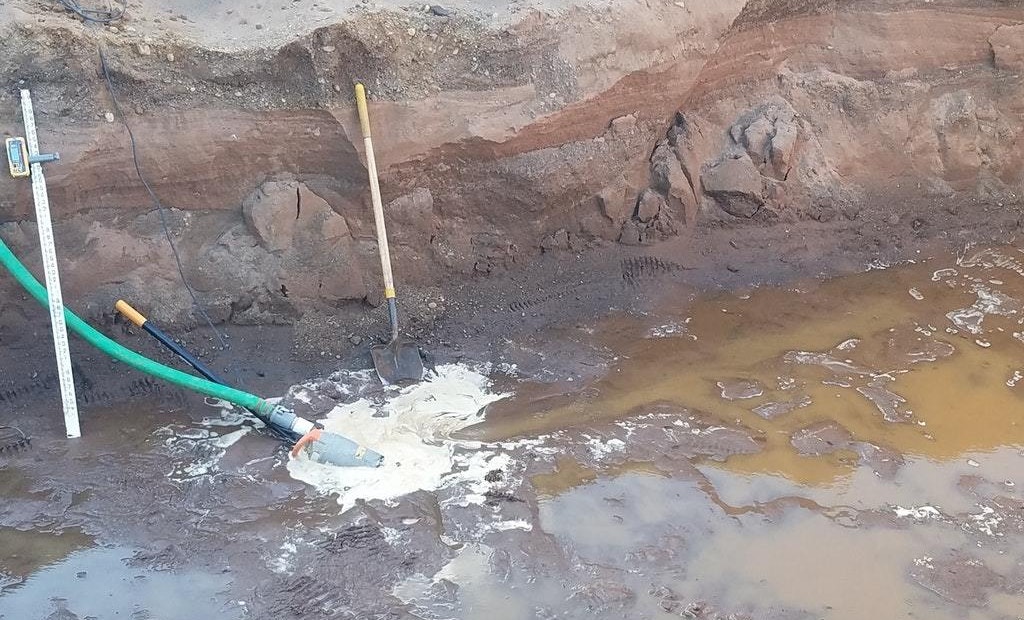Interested in Onsite Systems?
Get Onsite Systems articles, news and videos right in your inbox! Sign up now.
Onsite Systems + Get AlertsMany components in a septic system must be stable and dry during construction to protect the component and assure long-term viability. The surface should be maintained in as natural a condition as possible because soils that are wet at the time of construction are more likely to have problems with acceptance of wastewater due to compaction and smearing.
When it comes to stability, dewatering may be needed on extremely wet sites to assure stable installations for tanks and treatment units. There are several options to achieve this:
- Well points may work in sandy soils
- Diverting the water on a site to a low point
- Installing a sump in the corner of the excavation
If you are installing components into an area of a known water table, buoyancy calculations should be performed to assure that the component will stay in the ground and if not, additional measures must be taken.
If water is being pumped or diverted it is critical that the water be clean before being released. Therefore the installer should be checking local erosion control requirements.
For general site construction, soil must be dry enough so equipment for site preparation, installation and materials handling can safely and effectively access and operate on the site. During repair and replacement of system components on sites with existing dwellings, construction can damage landscaping and driveways, particularly if the installation occurs in wet conditions. If considerable construction activity has caused compaction, then the ability of the soil to transmit liquid will be seriously reduced and failure is more likely.
When building soil treatment areas, compaction and smearing are more likely to occur with installations on sites with high water tables and soil textures with high clay content; therefore, the soil surface must be treated carefully.
- Compaction is the compression of soil particles, which reduces the pore spaces.
- Smearing is spreading and smoothing soil particles by sliding pressure.
The higher the clay content of the soil, the greater the likelihood that the soil will hold water. Soils that are saturated — meaning all the pore spaces are filled with water — or nearly saturated have lower soil strength, and they will compact and smear more than the same soil under dry conditions. To limit impacts to the natural soil structure, excavation is only allowable when the soil is below the plastic limit and when the soil is dry enough to be worked. The soil should also not be frozen at the infiltrative surface as smearing can occur under these conditions as well.
Once construction of the STA begins, the exposed areas should be immediately covered with distribution or fill material as specified in the design. If the areas are exposed to direct rainfall, the natural soil conditions may be damaged and contamination may occur. If the infiltrative surface is rained on, the soil must be allowed to dry and must be prepared again after consultation with the system designer and local permitting authority. If for some reason you can place the required media for the exposed soil, cover it with a tarp until construction can proceed.
Keeping these concepts in mind during installation on wet sites can help to ensure the long-term performance of your septic systems.
About the author: Sara Heger, Ph.D., is a researcher and educator in the Onsite Sewage Treatment Program in the Water Resources Center at the University of Minnesota, where she also earned her degrees in agricultural and biosystems engineering and water resource science. She presents at many local and national training events regarding the design, installation and management of septic systems and related research. Heger is the President of the National Onsite Wastewater Recycling Association and she serves on the NSF International Committee on Wastewater Treatment Systems. Ask Heger questions about septic system design, installation, maintenance and operation by sending an email to kim.peterson@colepublishing.com.






